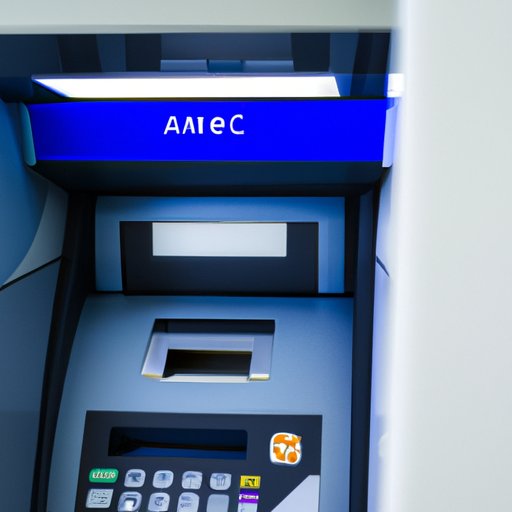Introduction
Automated Teller Machines (ATMs) have been around for decades and are a staple of modern life. They provide a convenient way for customers to access their money without having to visit a bank branch. But what exactly is an ATM and how does it work? In this article, we’ll explore the inner workings of ATMs and provide an overview of the security measures that are built into them.
Exploring the Inner Workings of ATMs
The first step in understanding how ATMs work is to understand how they communicate with banks. Each time a customer uses an ATM, the machine sends a message to the bank’s computer system. This message contains information about the customer and the type of transaction they want to perform. The bank’s computer system then verifies the customer’s information and authorizes the transaction.
Once the bank has authorized the transaction, the ATM will dispense the requested amount of cash or provide the customer with a receipt for the transaction. The customer can then take the cash or receipt and leave the ATM. The ATM will then update its records to reflect the completed transaction.
To use an ATM, customers must insert their debit card into the machine. The card reader will read the information stored on the card and authenticate the customer’s identity. If the customer enters the correct PIN number, the ATM will display a menu of available options, such as withdrawing cash or checking their balance. Customers can then select the option they want and follow the instructions on the screen.

An Overview of the Security Measures Built into ATMs
To ensure the security of customers’ funds, ATMs are equipped with several layers of security measures. These include physical barriers such as locks, cameras, and alarms, as well as software-based security measures like encryption and authentication protocols. Many ATMs also utilize biometric technology, such as fingerprint scanners, to authenticate customers.
In addition to these security measures, ATMs are also equipped with various components that help them function properly. These components include a card reader, a keypad, a display screen, a printer, a cash dispenser, and a communications unit. All of these components work together to enable customers to access their money and complete transactions safely.
The history and development of ATMs can be traced back to the 1960s, when the first machines were developed by banks in order to reduce the cost of providing banking services. Since then, ATMs have become increasingly sophisticated and secure, with many banks now offering additional features such as mobile payments, bill payment, and online banking.

Comparing Different Types of ATMs
There are several different types of ATMs available today. The most common type is the traditional “brick and mortar” ATM, which is typically located inside a bank branch. These ATMs offer customers the ability to withdraw cash, check their balance, transfer funds, and pay bills.
Other types of ATMs include off-site ATMs, which are located outside of bank branches, and mobile ATMs, which are typically mounted on wheels and can be moved from one location to another. Additionally, some banks offer virtual ATMs, which allow customers to access their accounts through a computer or mobile device.
Each type of ATM has its own advantages and disadvantages. Traditional ATMs provide the most comprehensive range of services, but may require customers to wait in line to use them. Off-site ATMs are more convenient, but may not have the same level of security as traditional ATMs. Mobile ATMs are ideal for those who need to access their funds in remote locations, but may be limited in terms of the services they offer. And virtual ATMs provide the convenience of online banking, but may be vulnerable to hacking.
Popular models of ATMs include NCR Corporation’s SelfServ series, Diebold Nixdorf’s Opteva series, and Wincor Nixdorf’s ProCash series. These models are all designed to be secure, reliable, and easy to use. They also offer a variety of features, such as touch screens, cash recyclers, and contactless payments.
Conclusion
In conclusion, ATMs are an essential part of modern life. Understanding how they work and the security measures that are built into them is important for ensuring that customers’ funds remain safe and secure. By exploring the inner workings of ATMs, the components that make up an ATM, and the different types of ATMs available, we can gain a better understanding of how they work and how to use them safely.
(Note: Is this article not meeting your expectations? Do you have knowledge or insights to share? Unlock new opportunities and expand your reach by joining our authors team. Click Registration to join us and share your expertise with our readers.)
